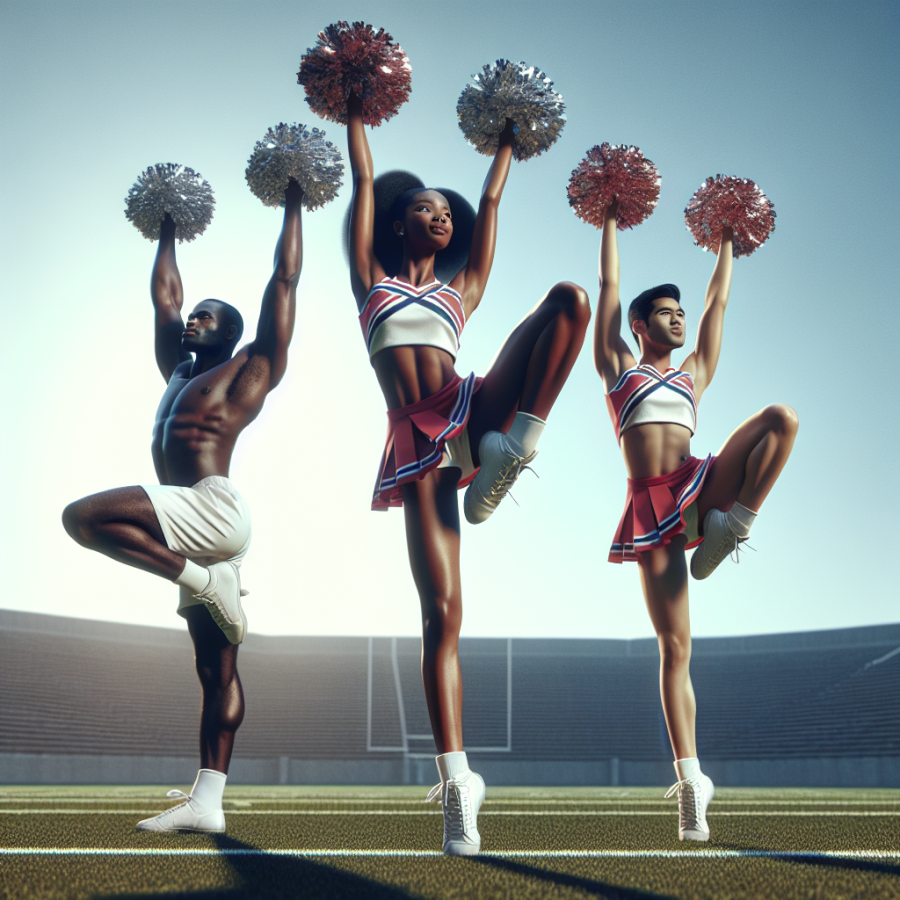Examining the Cultural Influence and Impact of Cheerleading in Modern Sports
Cheerleading has witnessed a significant metamorphosis over the years from its origin as a male-dominated activity to its current dynamic framework that welcomes all genders and age groups. This evolution has greatly influenced modern sports culture and led to the infusion of various unique art forms into the world of cheerleading.
One of the major cultural influences cheerleading has brought to modern sports is its integration of dance and gymnastics. Before the advent of cheerleading, these two artistic feats were solely perceived within the confines of their fields. However, cheerleading has managed to infuse these elements effectively, making dance and gymnastics integral components of modern sports culture.
Another key cultural influence of cheerleading in sports is the aspect of unity and teamwork it promotes. The collective efforts and synchronization required to perform cheerleading routines have made it a perfect symbolic representation of unity in sports. This idea of unity has since transcended beyond cheerleading and has become an intrinsic part of various sports cultures.
Moreover, the element of competition, which is synonymous with sports, has also been heightened by cheerleading. Traditionally, competition was limited to the games, but the introduction and growth of cheerleading have extended this aspect to the sidelines. Nowadays, cheerleading competitions hold as much excitement and anticipation as the main sporting events, further enriching the sports culture.
Cheerleading also plays a vital role in promoting school spirit and encouraging participation in sports. The energetic and lively performances of cheerleaders often stimulate an enthusiastic environment, inspiring more individuals to participate in different sports activities. This role of cheerleading, therefore, reinforces the view that it not only influences but also propels sports culture.
Furthermore, cheerleading's influence isn't just limited to on-field activities; it has also impacted the sports industry's commercial aspect. The cheerleading outfits, accessories, and equipment have created a wide market and have evolved into a substantial industry, contributing significantly to sports culture's commercial component.
The advent of cheerleading has also paved the way for more visibility and representation of women in sports. Despite the road being fraught with challenges, cheerleading, which has predominantly been led by women in recent times, has accentuated women's potential and visibility in sports, aiding in the relentless pursuit of gender equality in sports.
In addition, cheerleading has also facilitated cultural exchange and broadened our understanding of global diversity. With international cheerleading competitions, different cultures are represented and appreciated, making cheerleading a melting pot of diverse customs and traditions.
Read also:
Navigating Your Options: Which Golf Ball Should I Use?"
Tracing the Historical Evolution of Cheerleading in Sports
Cheerleading has a deep history that spans several decades, substantially evolving over time while profoundly influencing sports culture. It is more than just encouraging a team or acrobatic flips and splits. Tracing its evolution takes us back to its incorporation into sports events, up to its present status within the sports industry today.
Cheerleading, as we know it today, had its roots in the late 19th century. It originated in the United States in the 1880s as an all-male activity used to encourage school spirit at football games. The first recorded cheer occurred at a Princeton University football game in 1884, a 'Princeton cheer', which was more of a crowd chant than a choreographed routine. It was later popularized by Thomas Peebles, a Princeton graduate who introduced the practice to the University of Minnesota.
The early 1900s saw cheerleading becoming more organized, focusing more on the use of props, megaphones, and organized chants. This was also when females started to take notable roles in cheerleading. However, it wasn't until World War II, when many men left for the war, that women started to dominate cheerleading.
The evolution of cheerleading took a significant turn in the late 1940s when Lawrence "Herkie" Herkimer, a cheerleader from Southern Methodist University, formed the National Cheerleaders Association (NCA). Herkimer played a massive role in bringing cheerleading to a wider audience. He conducted cheerleading camps, helped develop sophisticated cheering techniques, introduced the pom-pom and the iconic "Herkie" jump.
The 1980s and 1990s were marked by the ushering of competitive cheerleading that involved more gymnastic elements. High schools and universities started to accept cheerleading not just as a supportive act for other sports but a competitive sport itself. Cheerleaders were expected to not only have entertainment attributes but also athleticism, characterized by high flying stunts, tumbles, and lifts. These decades also saw the creation of multiple regulating bodies for cheerleading, including the American Association of Cheerleading Coaches and Administrators (AACCA) and the National Cheer Safety Foundation.
In the 21st century, cheerleading has further evolved to include dance routines and high-intensity acrobatics. Today, it is a multi-billion-dollar industry a globally recognized athletic activity.




